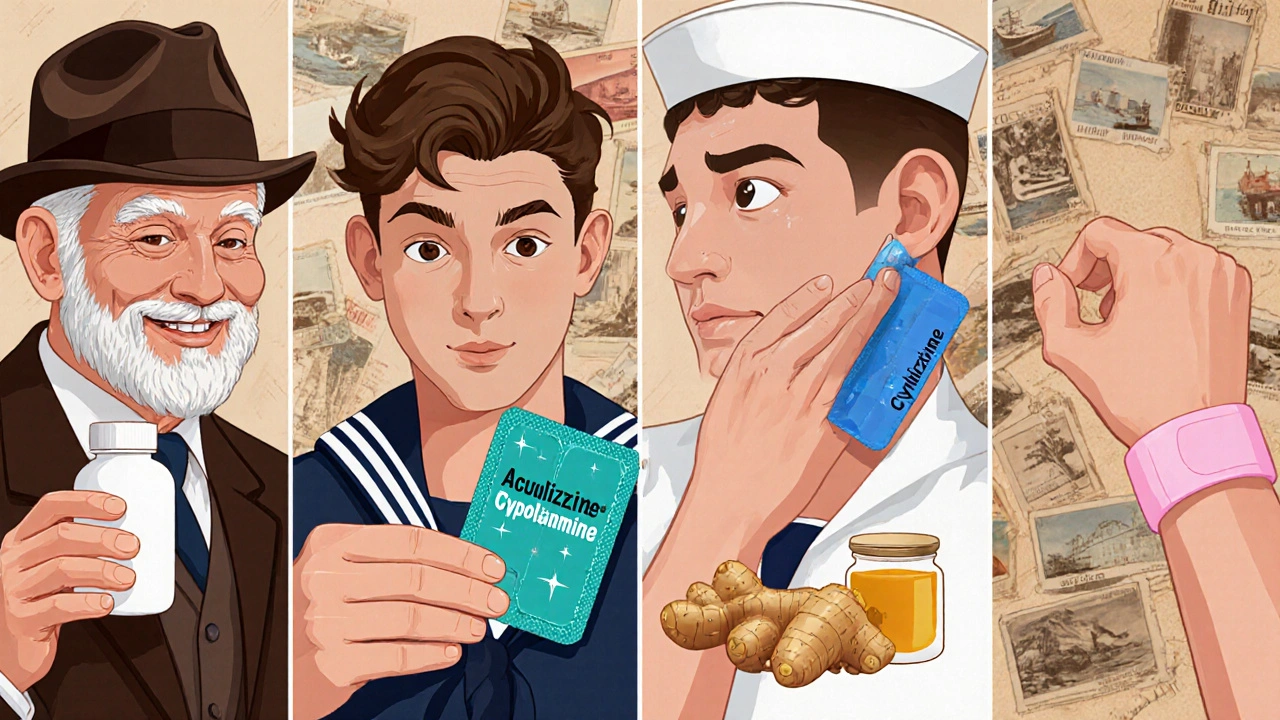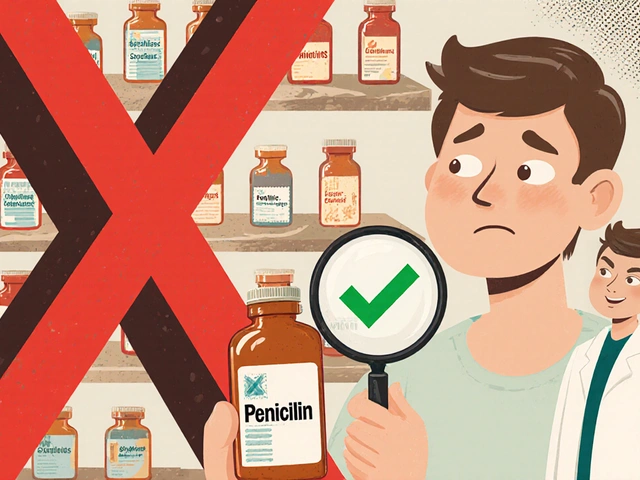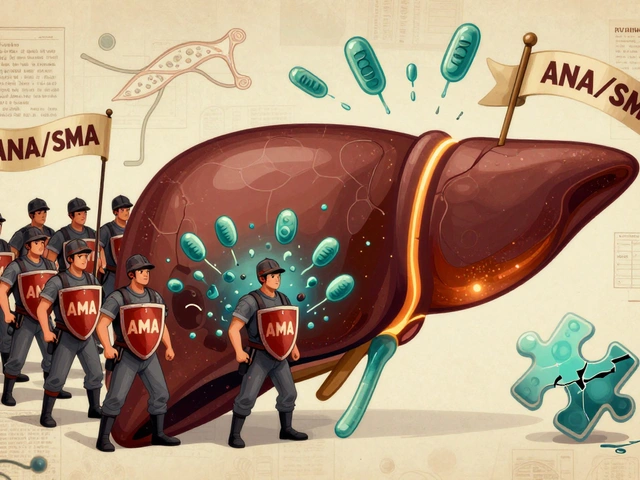Dramamine vs Alternatives: Which Motion Sickness Remedy Is Best?
Key Takeaways
- Dramamine (dimennhydrinate) works by blocking histamine receptors, making it good for short trips.
- Meclizine and cyclizine are less drowsy options, better for longer journeys.
- Scopolamine patches provide continuous relief but can cause dry mouth and blurred vision.
- Non‑drug strategies (acupressure, ginger, positioning) work well when combined with medication.
- Choose based on travel length, side‑effect tolerance, and any pre‑existing health conditions.
When you’re stuck on a boat, plane, or even a winding road, the feeling of nausea can ruin the whole experience. You know the drill: you reach for the pink bottle in your bag and pop a Dramamine - the over‑the‑counter staple for motion sickness. But is it really the best choice for you? Below we break down how Dramamine (dimennhydrinate) stacks up against the most common alternatives, so you can pick the right remedy for your next trip.
What Is Dramamine (Dimenhydrinate)?
Dimenhydrinate is a first‑generation antihistamine that also has anticholinergic properties. In plain English, it blocks the signals in your inner ear that tell your brain you’re moving, and it also dampens the brain’s nausea center. The drug was introduced in the 1940s and quickly became the go‑to OTC remedy for sea, air, and road‑induced queasiness.
Typical dosage for adults is 50-100 mg taken 30 minutes before travel, with a repeat dose every 4-6 hours if needed (up to 400 mg per day). It’s available in chewable tablets, liquid, and even gummies for kids.
How Does Dimenhydrinate Work?
Dimenhydrinate is essentially a combination of diphenhydramine (another antihistamine) and 8‑chloro‑theophylline. The diphenhydramine part blocks H1 histamine receptors, which reduces the vestibular system’s response to motion. The theophylline component adds a mild stimulant effect that can help offset the drowsiness that antihistamines usually cause.
Because it crosses the blood‑brain barrier, you’ll often feel a bit sleepy after taking it - a side effect that’s actually useful if you plan to rest during a long flight.
Common Alternatives at a Glance
Here are the three most frequently used OTC or prescription options that people compare to Dramamine:
- Meclizine (brand name Bonine or Antivert) - a second‑generation antihistamine with less sedation.
- Cyclizine (brand name Marezine) - another antihistamine that works quickly and is often favored for sea travel.
- Scopolamine (available as a transdermal patch - brand name Transderm‑Scop) - a prescription anticholinergic that provides up to 72 hours of continuous protection.
Side‑Effect Profiles: What to Expect
All motion‑sickness drugs share a core set of possible side effects because they interfere with the same neurotransmitters. Below is a quick rundown:
| Drug | Common Side Effects | Less Common / Severe |
|---|---|---|
| Dramamine (Dimenhydrinate) | Drowsiness, dry mouth, blurred vision | Confusion (elderly), urinary retention |
| Meclizine | Mild drowsiness, headache | Rare dizziness, tachycardia |
| Cyclizine | Drowsiness, dry mouth, constipation | Allergic rash, blurred vision |
| Scopolamine Patch | Dry mouth, drowsiness, blurred vision | Confusion, agitation, severe constipation |

Performance Comparison: Which Works Best?
Researchers have run head‑to‑head trials that look at efficacy, onset time, and duration. The general consensus (based on a 2023 meta‑analysis of 12 studies) is:
- Scopolamine patch - highest efficacy for prolonged travel, especially cruises; onset 4-6 hours after application.
- Meclizine - comparable to Dramamine for mild‑to‑moderate motion but with far less sedation.
- Cyclizine - fastest onset (15‑30 minutes) and good for sea travel, though sedation is moderate.
- Dramamine - solid for short trips, best when you don’t mind feeling a bit sleepy.
In practice, the "best" drug depends on three factors:
- Travel length: Longer trips gain from sustained release (scopolamine) or low‑sedation daily dosing (meclizine).
- Side‑effect tolerance: If you need to stay alert (e.g., driving after a flight), pick a low‑sedation option.
- Medical history: Elderly patients, glaucoma sufferers, or those on certain antidepressants should avoid strong anticholinergics.
Choosing the Right Remedy for Your Situation
Below is a quick decision guide you can follow before you pack your medicine pouch.
- Day trip or short flight (≤6 hours) - Dramamine or chewable meclizine. Take 30 minutes before departure.
- Multi‑day cruise - Scopolamine patch. Apply the patch behind your ear the day before boarding.
- Road trip with multiple drivers - Meclizine for the driver (less drowsy) and Dramamine for passengers who can nap.
- Pregnant or breastfeeding - Consult a doctor; ginger and acupressure bands are safer first steps.
- Children under 12 - Use pediatric‑formulated Dramamine or ginger chews; avoid scopolamine.
Non‑Drug Strategies You Can Pair With Medication
Even the best drug can’t beat a good travel plan. Here are three evidence‑based tricks that boost any medication’s success:
- Positioning: Sit in the middle of a car, over the wings of a plane, or near the boat’s centerline - these spots experience the least motion.
- Ginger: Studies from 2022 show 1 g of ginger powder taken 30 minutes before travel reduces nausea scores by ~30%.
- Acupressure wrist bands: The P6 (Neiguan) point, located three finger‑widths above the wrist crease, can ease queasy feelings when pressed continuously.
Safety Tips and When to See a Doctor
Most motion‑sickness drugs are safe for healthy adults, but watch out for these red flags:
- Severe, persistent vomiting despite medication - could signal a deeper gastrointestinal issue.
- Sudden vision changes or severe dizziness - may indicate an adverse reaction, especially with scopolamine.
- Pregnancy, chronic heart disease, glaucoma, or current use of MAO inhibitors - always get medical clearance.
If any of these occur, pause the medication and get professional advice.
Bottom Line: What Should You Bring?
Pack the drug that matches your itinerary, but keep a backup. A typical travel kit could look like this:
- One pack of Dramamine chewables (for quick relief).
- A small bottle of meclizine tablets (low‑sedation daily dose).
- If traveling over 48 hours on a boat, a scopolamine patch (prescribed by a doctor).
- Ginger capsules, acupressure wrist bands, and a reusable water bottle.
With the right mix, you’ll spend less time worrying about nausea and more time enjoying the view.
Can I take Dramamine with alcohol?
Mixing dimenhydrinate with alcohol can heighten drowsiness and impair coordination. It’s safest to avoid alcohol while the medication is active, especially if you need to drive or operate machinery.
How long before travel should I take Dramamine?
Take a dose about 30 minutes before you start moving. This gives the drug time to reach peak blood levels and block the nausea signals.
Is meclizine safe for people with high blood pressure?
Meclizine is generally considered safe for most people with hypertension, but it can cause mild dizziness. If you have severe or uncontrolled blood pressure, check with a physician first.
Can I use a scopolamine patch if I’m pregnant?
Scopolamine is not recommended during pregnancy because it crosses the placental barrier. Pregnant travelers should rely on non‑drug measures and consult their OB‑GYN before taking any medication.
What’s the difference between Cyclizine and Dramamine?
Both are antihistamines, but cyclizine tends to act faster (15‑30 minutes) and is often favored for sea travel. Dramamine has a stronger anticholinergic effect, which can cause more drowsiness but also provides a slightly longer duration.







11 Comments
Ivan Laney
October 20, 2025 at 23:00
As an avid traveller who proudly waves the Stars and Stripes on every continent, I can tell you that choosing the right anti‑nausea weapon is not just a matter of convenience but a patriotic duty to keep our citizens alert and ready for any challenge that the open skies or rolling seas may throw at us; Dramamine, with its time‑tested formula, has served generations of American soldiers and tourists alike, and its ability to induce that comforting drowsiness can be a welcome companion during those long overnight flights that stitch our nation together; however, the modern traveler must also consider the less sedating alternatives like meclizine, which offer a more disciplined, stay‑awake approach that aligns with the American spirit of determination and productivity; let us not forget the scopolamine patch, a marvel of pharmaceutical engineering that provides continuous protection without the need for repeated dosing, a true testament to our ingenuity; the choice, ultimately, should reflect the journey’s length, the need for vigilance, and the unyielding resolve that defines our great country.
Kimberly Lloyd
October 26, 2025 at 16:54
Thinking about the broader picture, it's wonderful how each option offers a different balance between calm and clarity, allowing us to tailor our experience to the unique rhythm of each adventure; whether you cherish the gentle lull of a short flight or the steady focus required on a long road trip, there’s a remedy that can harmonize with your personal journey, and that flexibility is truly a gift worth appreciating.
Sakib Shaikh
November 1, 2025 at 11:47
Listen up, folks! I'm telling ya, if you think Dramamine is the only hero in this saga, you're missin' out on a whole cast of characters that can kick that nasty queasy feeling right outta ya, and lemme lay it down-meclizine's like the silent ninja, slippin' in with barely any drowsiness, while cyclizine's the flashbang that hits fast and hard; don’t even get me started on scopolamine patches-those bad boys are the marathon runners of the bunch, stick 'em on and ride the wave for days, but watch out for that dry mouth, it's like sandpaper in your throat, ya know?
Chirag Muthoo
November 7, 2025 at 06:40
Dear colleague, thank you for your enthusiastic contribution. Kindly allow me to suggest a measured approach: when evaluating pharmacological options, it is prudent to consider both efficacy and safety profiles, especially for individuals with pre‑existing conditions. In this regard, meclizine presents a favorable balance of effectiveness with reduced sedation, making it suitable for sustained vigilance.
Angela Koulouris
November 13, 2025 at 01:34
Great points shared! Just remember, every traveler’s kit is a canvas, and you have the palette to paint it with the colors that best suit your needs-add a splash of ginger, a dash of acupressure, and you’ll navigate any wave with confidence.
Harry Bhullar
November 18, 2025 at 20:27
When evaluating motion‑sickness prophylaxis, it is essential to understand the pharmacodynamic properties of each agent, as well as their clinical applicability across different travel scenarios.
First, dimenhydrinate exerts its anti‑emetic effect through H1 receptor antagonism combined with anticholinergic activity, resulting in a reliable but sedating profile that is advantageous for short, restful journeys.
Second, meclizine, a second‑generation antihistamine, offers a comparable efficacy with significantly reduced central nervous system depression, making it suitable for drivers who must maintain alertness.
Third, cyclizine demonstrates a rapid onset of action, typically within 15‑30 minutes, which is particularly beneficial for sea travel where motion can be abrupt and unpredictable.
Fourth, the scopolamine transdermal patch delivers continuous anticholinergic blockade for up to 72 hours, providing unmatched coverage for extended cruises, though clinicians must monitor for xerostomia and blurred vision.
Furthermore, non‑pharmacological adjuncts such as ginger supplementation have been shown in meta‑analyses to reduce nausea severity by approximately 30%, reinforcing the importance of a multimodal strategy.
Acupressure bands targeting the P6 meridian also contribute to symptom reduction, especially when combined with pharmacotherapy.
From a safety perspective, patients with glaucoma, urinary retention, or severe cardiac disease should avoid potent anticholinergics like scopolamine.
Individuals with hypertension may tolerate meclizine well, but monitoring for tachycardia remains advisable.
Pregnant travelers should prioritize non‑drug measures and seek obstetric guidance before initiating any antihistamine therapy.
In practice, the optimal regimen is often personalized: a short‑haul flight may be adequately covered by a single dose of dimenhydrinate taken 30 minutes prior, whereas a multi‑day cruise warrants a scopolamine patch applied the day before embarkation.
Combining low‑sedation antihistamines with strategic positioning-such as seating over the aircraft wing or near the vessel’s centerline-further mitigates vestibular stimulation.
Ultimately, clinicians should counsel patients on the trade‑offs between efficacy, onset time, and side‑effect burden, enabling informed decision‑making tailored to the traveler’s itinerary and health profile.
By adopting a comprehensive approach that integrates both pharmacologic and non‑pharmacologic modalities, travelers can significantly diminish the disruptive impact of motion sickness and enjoy their journeys with greater comfort and confidence.
Dana Yonce
November 24, 2025 at 15:20
Got it! So basically, if you want quick relief, try cyclizine, but if you plan a long cruise, scopolamine is the way to go 😎
Lolita Gaela
November 30, 2025 at 10:14
From a pharmacotherapeutic standpoint, the bioavailability and half‑life metrics of dimenhydrinate underscore its suitability for intermittent dosing schedules, whereas scopolamine’s transdermal delivery system optimizes steady‑state plasma concentrations, thereby minimizing peak‑trough variability and enhancing therapeutic adherence in prolonged itineraries.
Giusto Madison
December 6, 2025 at 05:07
Listen up, folks-if you’re looking for a no‑nonsense fix, grab the meclizine bottle and keep your head in the game; it’s fast, it’s effective, and it won’t have you nodding off like a bobblehead, so stay sharp and travel smart.
erica fenty
December 12, 2025 at 00:00
Wow, great info, very helpful, concise, clear, valuable, thorough.
Xavier Lusky
December 17, 2025 at 18:54
Just think about it-big pharma pushes these meds to keep us dependent, masking the real solution which is simply to avoid motion or use natural methods, but they don't want you to know that.